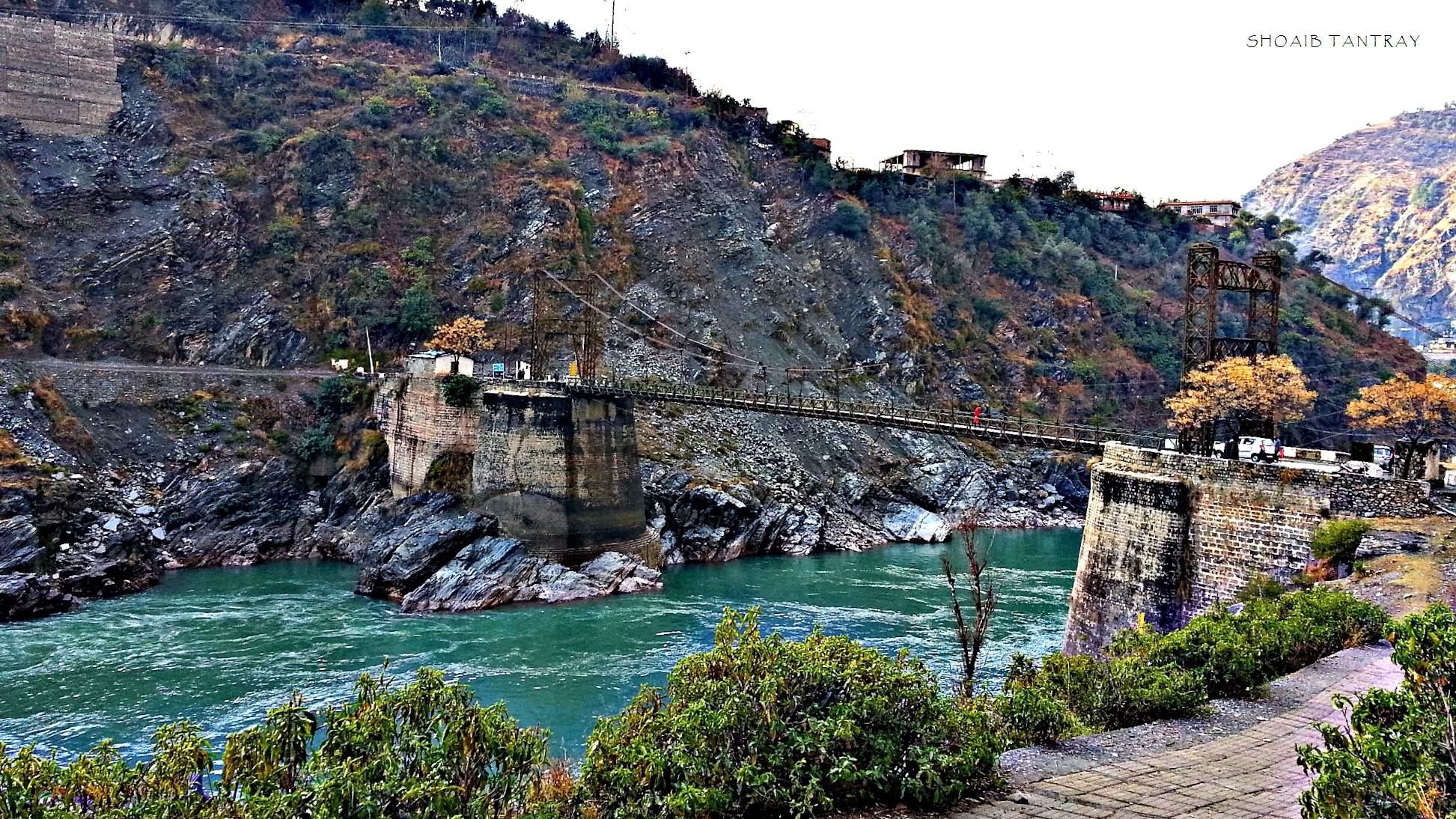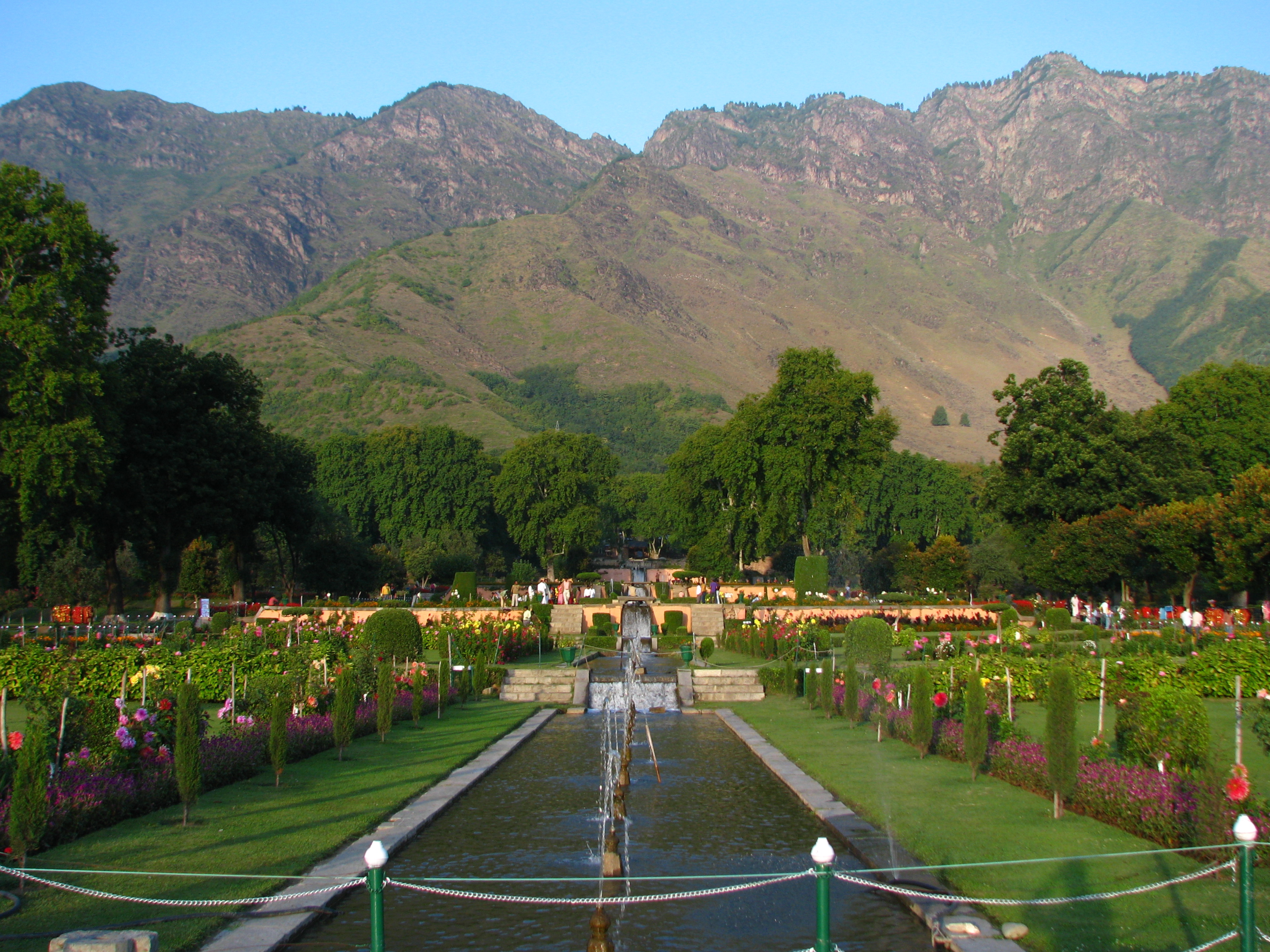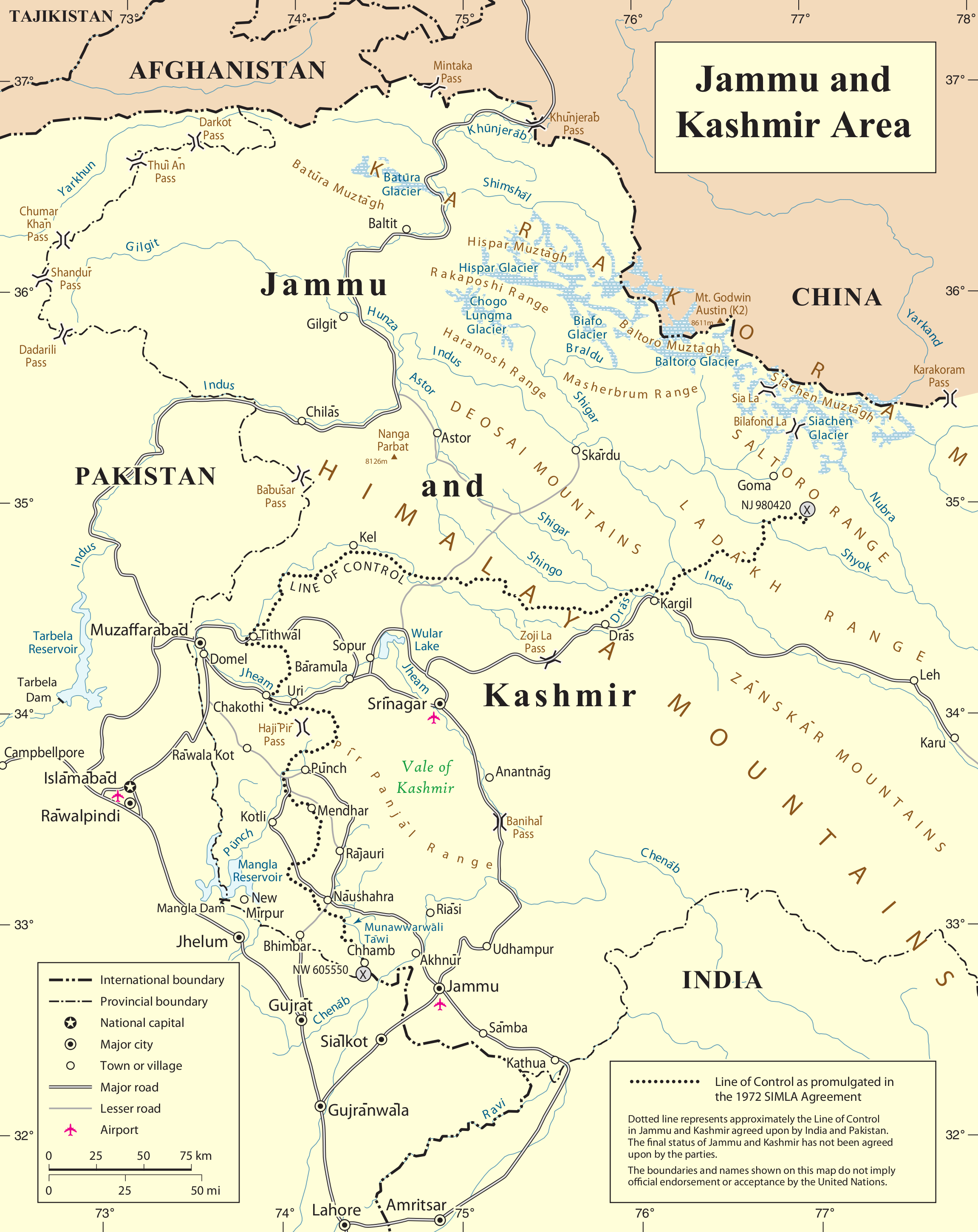|
Stod River
The Doda River or the Stod River is a river long, which forms the Stod Valley in the Zanskar valley of the Leh district in the Union Territory of Ladakh in India. Geography The Doda River rises from the Drang-Drung Glacier near Pensi La, a mountain pass off the Zanskar-Kargil road. The Drang-Drung Glacier is a river of ice and snow by itself and is the largest glacier other than the Siachen Glacier in Ladakh outside the Karakoram Range. It gives rise to a mountain peak named Doda Peak, high, and gives its name to the Doda district, which lies in the rear of the glacier. The Doda River is also known as Stod River. After rising from its source, the Doda River flows southeast along the Kargil — Zanskar road in the main Zanskar valley, through the towns of Akshu, Abran, Kushol and Phey. The river then meets the Tsarap River at a confluence near Padum, the capital of Zanskar. Together, these two rivers form the Zanskar River, a tributary of the Indus River. The Doda River cont ... [...More Info...] [...Related Items...] OR: [Wikipedia] [Google] [Baidu] |
India
India, officially the Republic of India, is a country in South Asia. It is the List of countries and dependencies by area, seventh-largest country by area; the List of countries by population (United Nations), most populous country since 2023; and, since its independence in 1947, the world's most populous democracy. Bounded by the Indian Ocean on the south, the Arabian Sea on the southwest, and the Bay of Bengal on the southeast, it shares land borders with Pakistan to the west; China, Nepal, and Bhutan to the north; and Bangladesh and Myanmar to the east. In the Indian Ocean, India is near Sri Lanka and the Maldives; its Andaman and Nicobar Islands share a maritime border with Thailand, Myanmar, and Indonesia. Modern humans arrived on the Indian subcontinent from Africa no later than 55,000 years ago., "Y-Chromosome and Mt-DNA data support the colonization of South Asia by modern humans originating in Africa. ... Coalescence dates for most non-European populations averag ... [...More Info...] [...Related Items...] OR: [Wikipedia] [Google] [Baidu] |
Karakoram Range
The Karakoram () is a mountain range in the Kashmir region spanning the border of Pakistan, China, and India, with the northwestern extremity of the range extending to Afghanistan and Tajikistan. Most of the Karakoram mountain range is within Pakistan's Gilgit-Baltistan region, the northern subdivision of Kashmir. Karakoram's highest and the world's second-highest peak, K2, is located in Gilgit-Baltistan. The mountain range begins in the Wakhan Corridor in Afghanistan in the west, encompasses the majority of Gilgit-Baltistan, controlled by Pakistan and then extends into Ladakh, controlled by India and Aksai Chin, controlled by China. It is part of the larger Trans-Himalayan mountain ranges. The Karakoram is the second-highest mountain range on Earth and part of a complex of ranges that includes the Pamir Mountains, Hindu Kush, and the Indian Himalayas. The range contains 18 summits higher than in elevation, with four above : K2 ( AMSL) (the second-highest peak on Ear ... [...More Info...] [...Related Items...] OR: [Wikipedia] [Google] [Baidu] |
Rivers Of Jammu And Kashmir
Jammu and Kashmir (union territory), Jammu and Kashmir has many lakes, rivers, and glaciers. Significant rivers that flow through Jammu & Kashmir from the Himalayas are Jhelum River, Jhelum, Chenab River, Chenab and Ravi River, Ravi These river basins are located at a higher elevation facilitating huge hydro power potential. List of rivers Jammu & Kashmir rivers fall into three river systems. Indus River System * Indus River (Main) ** Ladakh, in Ladakh the main tributaries of Indus are Suru, Nubra and Zanskar rivers. *** Suru River (Indus), Suru River (Indus tributary; flows through Kargil) **** Dras River (Joins Suru near Kargil) **** Shingo River (Tributary of Suru) *** Nubra River (Indus tributary in Ladakh) *** Zanskar River (Major Indus tributary; merges at Nimmu) **** Yapola River (Tributary of Zanskar, which merges with Indus) ** Jammu and Kashmir, in J&K the main tributaries of Indus are Chenab and Jhelum. *** Chenab River (Largest tributary of Indus in J&K) **** M ... [...More Info...] [...Related Items...] OR: [Wikipedia] [Google] [Baidu] |
Srinagar
Srinagar (; ) is a city in Indian-administered Jammu and Kashmir in the disputed Kashmir region.The application of the term "administered" to the various regions of Kashmir and a mention of the Kashmir dispute is supported by the tertiary sources (a) through (d), reflecting due weight in the coverage. Although "controlled" and "held" are also applied neutrally to the names of the disputants or to the regions administered by them, as evidenced in sources (f) through (h) below, "held" is also considered politicised usage, as is the term "occupied," (see (i) below). (a) (subscription required) Quote: "Kashmir, region of the northwestern Indian subcontinent ... has been the subject of dispute between India and Pakistan since the partition of the Indian subcontinent in 1947. The northern and western portions are administered by Pakistan and comprise three areas: Azad Kashmir, Gilgit, and Baltistan, the last two being part of a territory called the Northern Areas. Administered ... [...More Info...] [...Related Items...] OR: [Wikipedia] [Google] [Baidu] |
Zojila
Zoji La (sometimes Zojila Pass) is a high mountain pass in the Himalayas. It is located in the Ganderbal district of Jammu and Kashmir and the Kargil district of Ladakh, both union territories of India. This pass connects the Kashmir Valley to its west with the Dras and Suru valleys to its northeast and the Indus valley further east. National Highway #1 between Srinagar and Leh in the western section of the Himalayan mountain range, traverses the pass. As of late 2022, an all-weather Zoji-la Tunnel is under construction to mitigate seasonal road blockages due to heavy snowfall. Etymology According to some sources, ''Zoji La'' means the "mountain pass of blizzards".Zojila Battle of 1948—When Indians Surpris ... [...More Info...] [...Related Items...] OR: [Wikipedia] [Google] [Baidu] |
Zanskar Kursha Gompa 01
Zanskar, Zahar (locally) or Zangskar, is the southwestern region of Kargil district in the Indian union territory of Ladakh. The administrative centre of Zanskar is Padum. Zanskar, together with the rest of Ladakh, was briefly a part of the kingdom of Western Tibet called Ngari Khorsum. Zanskar lies 250 km south of Kargil City on NH301. In August 2024, the Ministry of Home Affairs announced that Zanskar will become a district in Ladakh by 2028. Etymology Zanskar ( ''zangs dkar'') appears as ''“Zangskar”'' mostly in academic studies in social sciences (anthropology, gender studies), reflecting the Ladakhi pronunciation, although the Zanskari pronunciation is Zãhar. Older geographical accounts and maps may use the alternate spelling "Zaskar". An etymological study (Snellgrove and Skorupsky, 1980) of the name reveals that its origin might refer to the natural occurrence of copper in this region, the Tibetan word for which is "Zangs". The second syllable however seems t ... [...More Info...] [...Related Items...] OR: [Wikipedia] [Google] [Baidu] |
Indus River
The Indus ( ) is a transboundary river of Asia and a trans-Himalayas, Himalayan river of South Asia, South and Central Asia. The river rises in mountain springs northeast of Mount Kailash in the Western Tibet region of China, flows northwest through the disputed Kashmir region, first through the Indian-administered Ladakh, and then the Pakistani administered Gilgit Baltistan, Quote: "Kashmir, region of the northwestern Indian subcontinent. It is bounded by the Uygur Autonomous Region of Xinjiang to the northeast and the Tibet Autonomous Region to the east (both parts of China), by the Indian states of Himachal Pradesh and Punjab to the south, by Pakistan to the west, and by Afghanistan to the northwest. The northern and western portions are administered by Pakistan and comprise three areas: Azad Kashmir, Gilgit, and Baltistan, ... The southern and southeastern portions constitute the Indian state of Jammu and Kashmir. The Indian- and Pakistani-administered portions are divi ... [...More Info...] [...Related Items...] OR: [Wikipedia] [Google] [Baidu] |
Confluence
In geography, a confluence (also ''conflux'') occurs where two or more watercourses join to form a single channel (geography), channel. A confluence can occur in several configurations: at the point where a tributary joins a larger river (main stem); or where two streams meet to become the river source, source of a river of a new name (such as the confluence of the Monongahela River, Monongahela and Allegheny River, Allegheny rivers, forming the Ohio River); or where two separated channels of a river (forming a river island) rejoin downstream from their point of separation. Scientific study Confluences are studied in a variety of sciences. Hydrology studies the characteristic flow patterns of confluences and how they give rise to patterns of erosion, bars, and scour pools. The water flows and their consequences are often studied with mathematical models. Confluences are relevant to the distribution of living organisms (i.e., ecology) as well; "the general pattern [downstream o ... [...More Info...] [...Related Items...] OR: [Wikipedia] [Google] [Baidu] |
Phey
Phey is a village in the Leh district of Ladakh, India. It is located in the Leh tehsil A tehsil (, also known as tahsil, taluk, or taluka () is a local unit of administrative division in India and Pakistan. It is a subdistrict of the area within a Zila (country subdivision), district including the designated populated place that ser .... Demographics According to the 2011 census of India, Phey has 57 households. The effective literacy rate (i.e. the literacy rate of population excluding children aged 6 and below) is 83.16%. References {{Leh district Villages in Leh tehsil ... [...More Info...] [...Related Items...] OR: [Wikipedia] [Google] [Baidu] |
Doda District
Doda district is an administrative district of the Jammu division in the Indian union territory of Jammu and Kashmir in the Kashmir region. The application of the term "administered" to the various regions of Kashmir and a mention of the Kashmir dispute is supported by the tertiary sources (a) through (d), reflecting due weight in the coverage. Although "controlled" and "held" are also applied neutrally to the names of the disputants or to the regions administered by them, as evidenced in sources (f) through (h) below, "held" is also considered politicized usage, as is the term "occupied," (see (i) below). (a) (subscription required) Quote: "Kashmir, region of the northwestern Indian subcontinent ... has been the subject of dispute between India and Pakistan since the partition of the Indian subcontinent in 1947. The northern and western portions are administered by Pakistan and comprise three areas: Azad Kashmir, Gilgit, and Baltistan, the last two being part of a territor ... [...More Info...] [...Related Items...] OR: [Wikipedia] [Google] [Baidu] |
Mountain Peak
A summit is a point on a surface that is higher in elevation than all points immediately adjacent to it. The topography, topographic terms acme, apex, peak (mountain peak), and zenith are synonymous. The term (mountain top) is generally used only for a mountain peak that is located at some distance from the nearest point of higher elevation. For example, a big, massive rock next to the main summit of a mountain is not considered a summit. Summits near a higher peak, with some Topographic prominence, prominence or Topographic isolation, isolation, but not reaching a certain cutoff value for the quantities, are often considered ''subsummits'' (or ''subpeaks'') of the higher peak, and are considered part of the same mountain. A pyramidal peak is an exaggerated form produced by ice erosion of a mountain top. For summits that are permanently covered in significant layers of ice, the height may be measured by the highest point of rock (rock height) or the highest point of permanent ... [...More Info...] [...Related Items...] OR: [Wikipedia] [Google] [Baidu] |
Siachen Glacier
The Siachen Glacier is a glacier located in the eastern Karakoram range of the Himalayas, just northeast of the point NJ9842 where the Line of Control between India and Pakistan ends in northeastern Kashmir. At long, it is the longest glacier in the Karakoram and List of glaciers#List of longest glaciers on Earth in non-polar regions, second-longest in the world's non-polar areas. It falls from an altitude of 5,753 m (18,875 ft) above sea level at its head at Indira Col on the India–China border down to 3,620 m (11,875 ft) at its glacier terminus, terminus. The entire Siachen Glacier, with all major passes, has been under the administration of India as part of the union territory of Ladakh Operation Meghdoot, since 1984. Pakistan maintains a territorial claim over the Siachen Glacier and controls the region west of Saltoro Ridge, lying west of the glacier, with Pakistani posts located 1 km below more than 100 Indian posts on the ridge. The Siachen ... [...More Info...] [...Related Items...] OR: [Wikipedia] [Google] [Baidu] |









